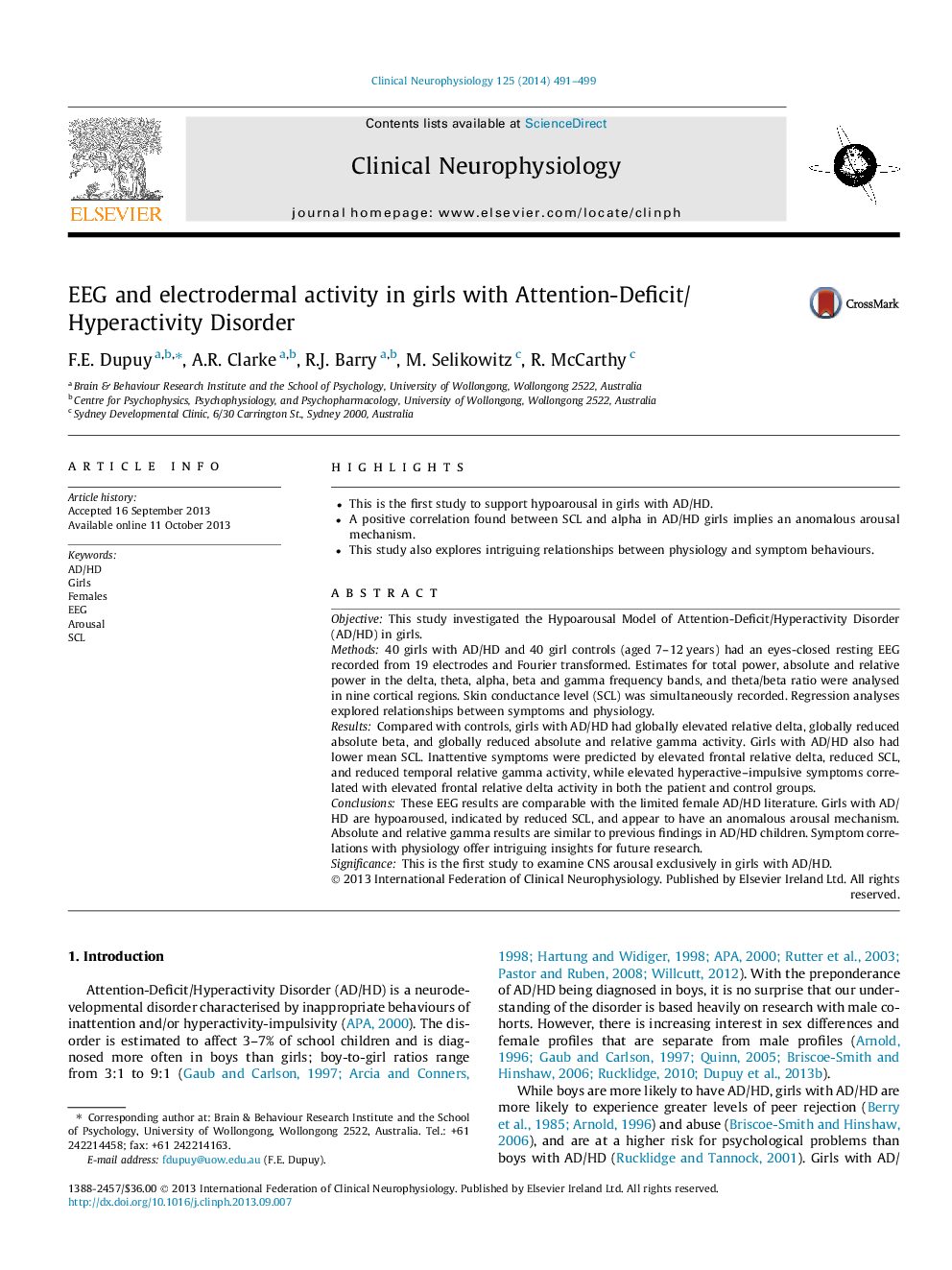| Article ID | Journal | Published Year | Pages | File Type |
|---|---|---|---|---|
| 3043938 | Clinical Neurophysiology | 2014 | 9 Pages |
•This is the first study to support hypoarousal in girls with AD/HD.•A positive correlation found between SCL and alpha in AD/HD girls implies an anomalous arousal mechanism.•This study also explores intriguing relationships between physiology and symptom behaviours.
ObjectiveThis study investigated the Hypoarousal Model of Attention-Deficit/Hyperactivity Disorder (AD/HD) in girls.Methods40 girls with AD/HD and 40 girl controls (aged 7–12 years) had an eyes-closed resting EEG recorded from 19 electrodes and Fourier transformed. Estimates for total power, absolute and relative power in the delta, theta, alpha, beta and gamma frequency bands, and theta/beta ratio were analysed in nine cortical regions. Skin conductance level (SCL) was simultaneously recorded. Regression analyses explored relationships between symptoms and physiology.ResultsCompared with controls, girls with AD/HD had globally elevated relative delta, globally reduced absolute beta, and globally reduced absolute and relative gamma activity. Girls with AD/HD also had lower mean SCL. Inattentive symptoms were predicted by elevated frontal relative delta, reduced SCL, and reduced temporal relative gamma activity, while elevated hyperactive–impulsive symptoms correlated with elevated frontal relative delta activity in both the patient and control groups.ConclusionsThese EEG results are comparable with the limited female AD/HD literature. Girls with AD/HD are hypoaroused, indicated by reduced SCL, and appear to have an anomalous arousal mechanism. Absolute and relative gamma results are similar to previous findings in AD/HD children. Symptom correlations with physiology offer intriguing insights for future research.SignificanceThis is the first study to examine CNS arousal exclusively in girls with AD/HD.
